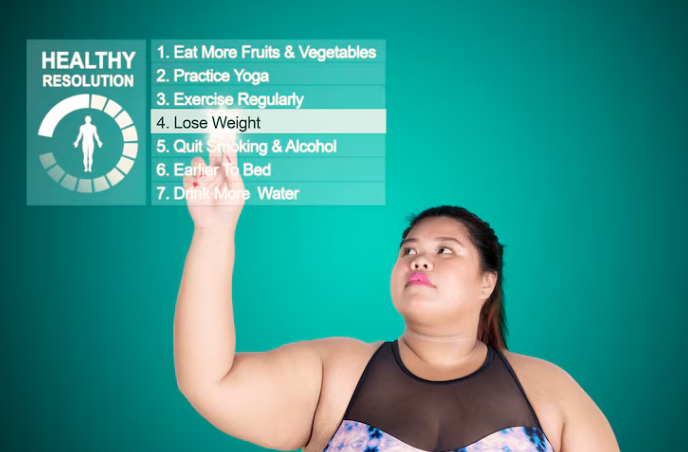Tired of weight loss advice that promises the world but delivers little to no results? It’s time to cut through the noise and focus on what truly works. Sustainable and effective weight loss isn’t about extreme diets or punishing workout regimens. Instead, it’s about making smart, science-backed changes to your lifestyle. Here are three simple, yet powerful, steps approved by science to help you shed pounds faster and keep them off for good.
1. Master Mindful Eating and Prioritize Nutrient-Dense Foods

The foundational principle of weight loss is creating a consistent calorie deficit, which means consuming fewer calories than your body burns. However, this doesn’t mean you have to starve yourself. The key is to be mindful of what and how much you eat, and to prioritize foods that are rich in nutrients but lower in calories.
The Science Says: Research consistently shows that a diet rich in whole, unprocessed foods is crucial for weight management. Foods like fruits, vegetables, lean proteins, and whole grains are high in vitamins, minerals, and fiber, which help you feel full and satisfied on fewer calories. Conversely, processed foods, sugary drinks, and refined carbohydrates are often packed with empty calories that contribute to weight gain. A study published in the American Journal of Clinical Nutrition found that a higher intake of fruits and vegetables is directly associated with weight loss.
Actionable Steps:
- Fill Half Your Plate with Veggies: At every meal, aim to make non-starchy vegetables the star. They are low in calories and high in fiber, adding volume to your meals and promoting satiety.
- Practice Portion Control: Be mindful of serving sizes. Using smaller plates can trick your brain into feeling satisfied with less food.
- Read Food Labels: Pay attention to calorie counts, sugar content, and serving sizes on packaged foods.
- Hydrate Smartly: Drink plenty of water throughout the day. Sometimes our bodies mistake thirst for hunger. Replacing sugary drinks with water is a simple yet effective way to cut a significant amount of calories.
2. Harness the Power of Protein and Fiber
To accelerate your weight loss journey, what you eat is just as important as how much you eat. Including ample protein and fiber in your diet can significantly enhance feelings of fullness, reduce cravings, and boost your metabolism.

The Science Says: Protein has a higher thermic effect of food (TEF) compared to carbohydrates and fats. This means your body burns more calories digesting and metabolizing protein. A high-protein diet has been shown to boost metabolism by up to 100 calories per day. Furthermore, protein and fiber are incredibly satiating. A 2015 review in The American Journal of Clinical Nutrition concluded that higher protein intakes increase satiety and help preserve muscle mass during weight loss. Soluble fiber, found in foods like oats, beans, and avocados, forms a gel-like substance in your gut, slowing down digestion and prolonging the feeling of fullness.
Actionable Steps:
- Start Your Day with Protein: Incorporate eggs, Greek yogurt, or a protein smoothie into your breakfast to curb hunger throughout the morning.
- Include a Lean Protein Source with Every Meal: Think chicken breast, fish, tofu, lentils, or beans.
- Snack on Fiber-Rich Foods: Reach for an apple, a handful of almonds, or some carrot sticks with hummus when hunger strikes between meals.
- Embrace Legumes and Whole Grains: Incorporate foods like chickpeas, lentils, quinoa, and brown rice into your meals to boost both your protein and fiber intake.
3. Combine Cardiovascular Exercise with Strength Training
While diet plays the most significant role in weight loss, physical activity is a crucial component for burning extra calories, improving your metabolic health, and maintaining your results long-term. A combination of cardiovascular exercise and strength training yields the best results.

The Science Says: Cardiovascular exercises, such as brisk walking, running, cycling, or swimming, are excellent for burning calories and improving heart health. The American College of Sports Medicine recommends at least 150 minutes of moderate-intensity cardio per week for weight loss. Strength training, on the other hand, is vital for building and maintaining muscle mass. Muscle tissue burns more calories at rest than fat tissue. A study in the journal Obesity found that combining diet with both cardio and resistance training was more effective for fat loss and preserving muscle than diet and cardio alone.
Actionable Steps:
- Schedule Regular Cardio Sessions: Aim for at least 30 minutes of moderate-intensity cardio most days of the week.
- Incorporate Strength Training: Include two to three non-consecutive days of strength training in your weekly routine. This can involve lifting weights, using resistance bands, or doing bodyweight exercises like push-ups and squats.
- Find Activities You Enjoy: The best exercise is the one you’ll stick with. Experiment with different activities to find what you love, whether it’s dancing, hiking, or a team sport.
- Stay Active Throughout the Day: Take the stairs instead of the elevator, walk during your lunch break, and incorporate more movement into your daily routine. Every little bit counts.
By focusing on these three simple, science-approved steps, you can create a sustainable and effective weight loss plan that not only helps you shed pounds faster but also sets you up for a healthier, more vibrant life. Remember, consistency is key, and small, smart choices add up to significant results over time.
